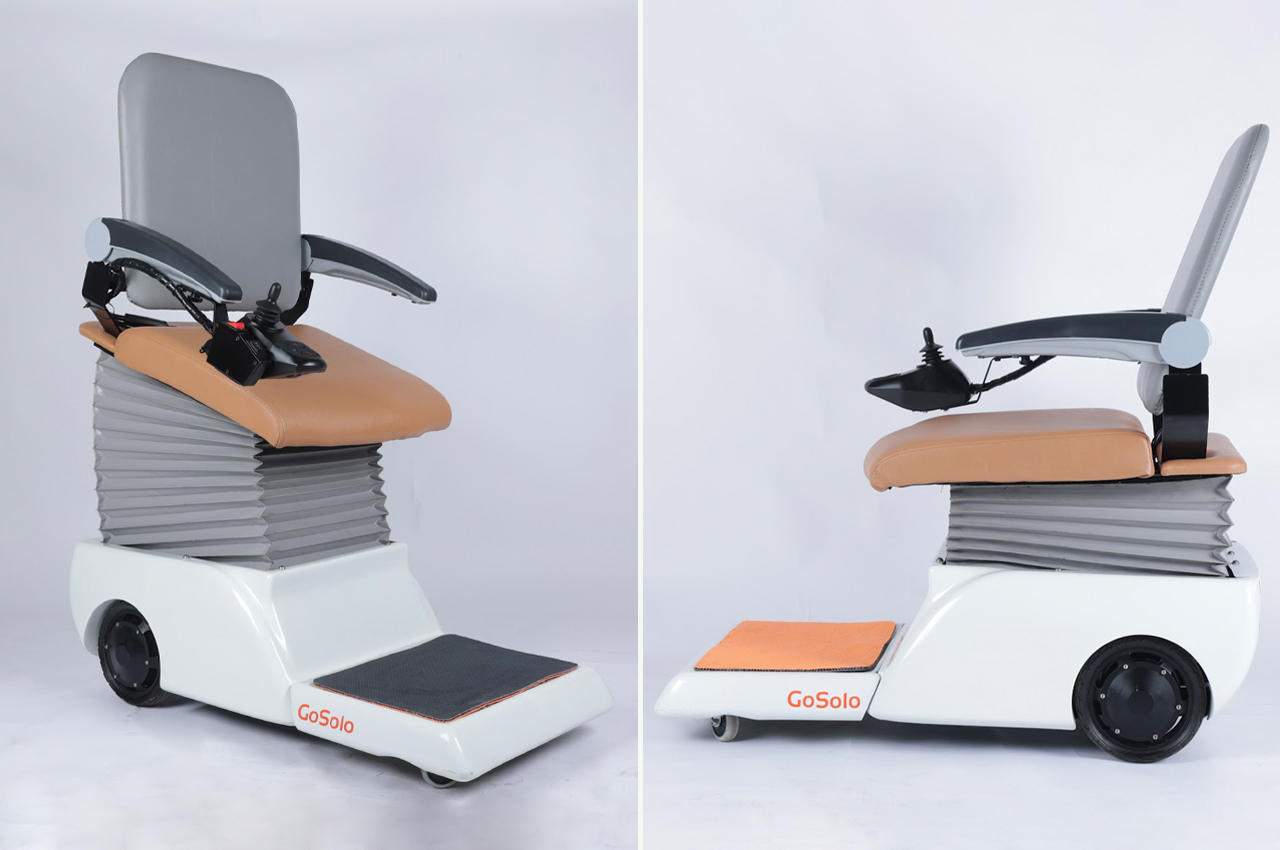#Like Wearing a Pair of Portable Studio Monitors – Review Geek

Table of Contents
“#Like Wearing a Pair of Portable Studio Monitors – Review Geek”
Price: 400

You don’t need to piss off your neighbors to hear the clear spacious sound of full-sized speakers or monitors. Audeze’s LCD-1 reference headphones manage to replicate the experience of large desktop speakers in a comfortable portable package. But with an open-back design and planar drivers, it’s hard to recommend them to anyone but audio nerds and musicians.
Here’s What We Like
- Detailed, spacious sound
- A flat response that’s perfect for audio editing
- Comfortable and portable
And What We Don’t
- Open-backed design means that other people can hear your music
- Lacks punch
- Great bass sound, but no rumble
At $400, the LCD-1s are the cheapest ‘phones in Audeze’s LCD Reference series. But they still managed to blow me away. I haven’t heard another pair of $400 headphones with this kind of clarity, sound stage, and flat frequency response, and the accessible form-factor just makes these headphones even better.
But these puppies ain’t for everyone, and I must harp on that fact. The open-back design is impractical in most headphone-worthy situations. Plus, the lack of punch and rumble, while fine for editing or recording audio, may turn off some enthusiasts who just want to listen to their favorite tracks on a nice pair of headphones.
What’s the Deal with Open-Back Headphones?
Before we talk about sound quality and build quality and all that crap, I gotta drive home the difference between open-back and closed-back headphones. We have a detailed guide on the subject, but you’ve probably figured things out by looking at the pictures; the LCD-1 has a plastic grille that exposes its drivers to the open air, while regular closed-back headphones shield their drivers behind a solid piece of plastic.
Okay, so how does that affect sound? Closed-back headphones create a seal over your ears, which prevents sound from escaping into the open air. Instead, the audio bounces between your ears and the cans, creating a muffling echo effect that doesn’t exist when listening to music with a full-sized speaker. Opening the back of the headphones enables sound to escape, lifting the blanket of echoes off your music and facilitating a clean “3D” effect that’s comparable to real speakers.

But the open-back design has some major downsides. Audio is free to leak out, so anyone in the room can hear what you’re listening to as if it were playing from a small speaker. You wouldn’t want to use the LCD-1s in a library or an open office, for example. Also, bass frequencies might sound good on a pair of open-back headphones (they sound great on the LCD-1s), but the open-back design doesn’t rumble your head and feels like it has less bass than closed-back headphones.
For this reason, manufactures often target open-back headphones toward enthusiasts and people who work with music or audio. They’re unconventional (or even useless) in some situations, but they can stand in for a set of full-sized headphones when you’re working on the go or blasting tunes in the middle of the night. If that’s what you’re into—read on!
Incredible Spacious Sound
As I mentioned at the top of this article, the LCD-1s are part of Audeze’s LCD Reference series. They’re intended for professionals, enthusiasts, and a-words (audiophiles). I don’t think that the average person should buy these, but still, I wish everyone could give them a try. You can pick out every detail of a song with these headphones or sit back and enjoy how instruments sit on a “3D” soundstage thanks to the open-back design.
And like any set of reference headphones worth their salt, the LCD-1s have a fantastic flat-but-smooth frequency response (spanning 10Hz – 50KHz). The mids sound great, the bass is lean and clean, and the highs sound detailed and airy without getting into icicle territory. My only note is that the bass response is a little subdued due to the open-back design. You can hear the bass, it sounds great, but your head won’t rumble while wearing LCD-1s.

Now’s a good time to mention that the Audeze LCD-1s use planar magnetic drivers instead of the dynamic drivers used by most headphones. We have a full guide on planar headphones at How-to Geek, but the gist is that planar drivers introduce very little distortion to a signal, even at high volumes. Zero distortion is a good thing, but the planar drivers in the LCD-1s lack punch and excitement, leaving you with a sound that can feel a bit clinical.
If you’re an audio engineer, then the subdued bass and lack of punch are fair trade-offs for clear gorgeous sound. That said, these aren’t the headphones for someone who’s obsessed with a fun, punchy, bass-heavy sound. For that, you may want a pair of closed-back dynamic headphones. You could also look at other headphones in the Audeze LCD Reference Series, which have larger drivers and a punchier sound.
Oh, one last note about the sound. I really appreciate that the LCD-1s have a16 ohm impedance. Other open-back headphones like the Sennheiser HD 600 have a very high impedance, which basically means that they sound quiet and crappy without the help of an amplifier. At 16 ohms, you can plug the LCD-1s into any audio source and start working without the help of a headphone amplifier, which is great news for amateurs and people on a budget.
A Strong but Lightweight and Portable Build

Open-back headphones aren’t good for private listening, which is why they’re usually big, bulky, and non-portable. But Audeze chose to make the LCD-1s lightweight, foldable, and portable, which makes sense to me. Hobbyists and students who work with audio need a portable stand-in for full-sized monitors, as the cheapest headphones in Audeze’s Reference series, the LCD-1s seem like the obvious choice.
As far as build quality goes, the LCD-1s are comparable to most headphones in the $200 to $500 range. Its lightweight plastic and aluminum components should last forever if cared for properly. The drivers are precision-crafted by hand, and like other Audeze headphones, the LCD-1s are assembled in California.
It’s funny, I’ve heard some people describe the LCD-1s as “too lightweight” or “too plasticky.” Nah, that’s crazy talk. The LCD-1s are lightweight, but they feel tough and well made. Sadists may prefer a pair of uncomfortable headphones, audiophiles may prefer a set of cans the size of pancakes, but as an “entry-level” product, it makes sense for the LCD-1s to be compact and lightweight.

That said, the cable situation may piss some people off. The LCD-1s use a split 3.5mm cable, so you’re stuck with two little wires dangling from both ears. It’s like wearing one of those outdoor hats with the chin string, which is a shame, although it’s not uncommon for “professional” headphones to have two inputs. (You don’t have to worry about mixing up the “left” and “right” cables, by the way. Both 3.5mm jacks are stereo and the headphones decide whether to use the left or right signal.)
I don’t really mind the split-cable design (it’s easy to forget about if you lay the wire across your back), but I do wish that the LCD-1s came with an extra cable. Replacements cost $35 (or $20 for a different brand), which is way more than anyone should have to spend on a 3.5mm cable. To Audeze’s credit, the LCD-1s also come with a 1/4-inch adapter and a hard carrying case, which are more valuable in the short term than an extra wire.
If You’ve Got the Money, Go for It
Elephant in the room? What are you talking about? Oh, I get it. At $400, the Audeze LCD-1s are a pretty hefty investment. I don’t think that the average person should spend $400 on a pair of headphones—especially not a pair of open-back headphones that are useless when you’re out in public or sitting on the couch next to your significant other.
But I encourage audio engineers, musicians, and enthusiasts to take the plunge. The LCD-1s offer the incredible the clarity, stereo imaging, and flat frequency response of full-sized monitors without eating up space at your desk or disturbing the neighbors. They’re well made, and they’re one of the few “portable” studio-grade open-back headphones, which is great news for hobbyists and students who need to record or edit audio away from home.
Still, I don’t think that the LCD-1s are the only option for enthusiasts or audio engineers looking for an alternative to full-sized speakers. Companies like Sennheiser and Beyerdynamic sell quality open-back headphones in the $200 range, and some closed-back headphones like the legendary Sony MDR-7506 can get the job done for under $100 (and I’ve seen used pairs as low as $30). You can find quality audio gear at just about any budget—the Audeze LCD-1s just happen to be one of the best pieces of equipment in the $300 to $400 range.
Here’s What We Like
- Detailed, spacious sound
- A flat response that’s perfect for audio editing
- Comfortable and portable
And What We Don’t
- Open-backed design means that other people can hear your music
- Lacks punch
- Great bass sound, but no rumble
If you liked the article, do not forget to share it with your friends. Follow us on Google News too, click on the star and choose us from your favorites.
For forums sites go to Forum.BuradaBiliyorum.Com
If you want to read more like this article, you can visit our Technology category.




